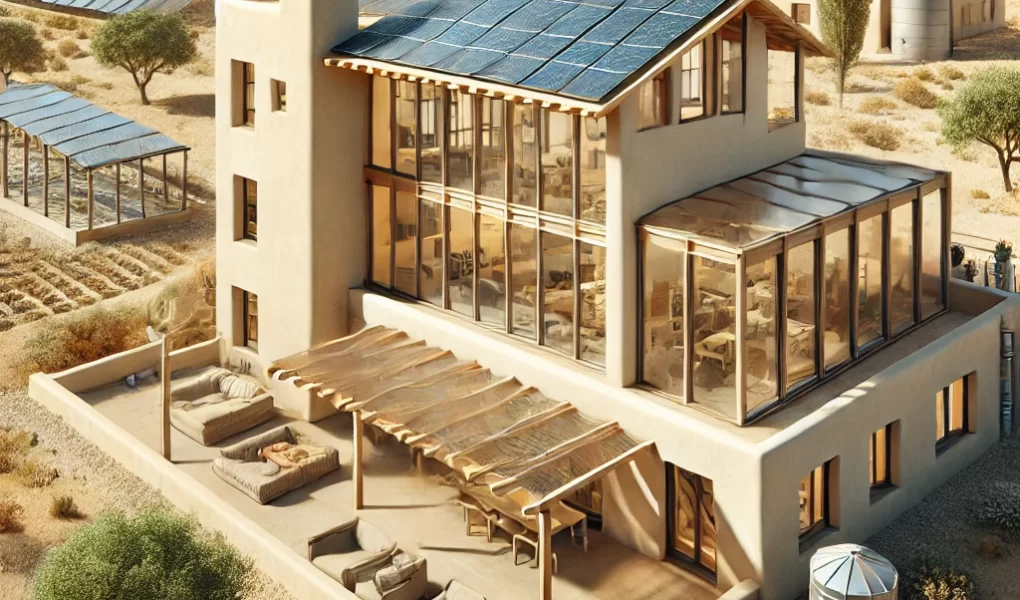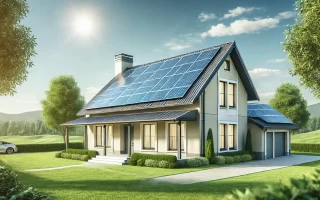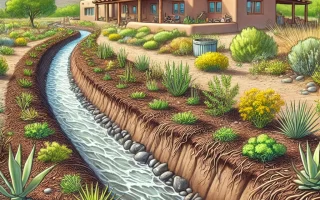Harnessing the Power of the Sun for a Sustainable Home
Imagine staying warm in the winter and cool in the summer—without relying on electricity. That’s the magic of passive solar design, a simple yet powerful way to use the sun’s natural energy to heat, cool, and light your home efficiently.
Passive solar homes are designed to work with nature, not against it. By using smart architectural techniques, strategic window placement, thermal mass, and shading, you can significantly reduce energy costs while making your home more comfortable year-round.
Whether you’re building a new home or modifying an existing one, passive solar design is one of the most cost-effective ways to create a self-sufficient, eco-friendly space.
In this guide, we’ll cover:
✅ What is passive solar design?
✅ The 5 key principles of passive solar homes
✅ Benefits of using passive solar energy
✅ How to design (or retrofit) your home for natural heating & cooling
What is Passive Solar Design?
Unlike active solar systems, which use solar panels and mechanical devices to generate energy, passive solar design simply optimizes the natural movement of heat and sunlight.
Instead of burning fossil fuels or running expensive HVAC systems, passive solar homes use building materials, positioning, and insulation to regulate temperature efficiently—without extra energy use.
💡 Think of it this way: A rock left in the sun all day will absorb heat and release it slowly at night. Passive solar homes work the same way!
The 5 Key Principles of Passive Solar Homes
1. Proper Orientation: Placing Your Home for Maximum Sunlight 🌞
The direction your home faces plays a huge role in how much natural heat and light it absorbs.
✅ Best orientation: In the Northern Hemisphere, homes should face south to receive the most sunlight in winter.
✅ Why it matters: South-facing windows allow sunlight to enter during winter while minimizing heat gain in summer.
💡 Tip: If you’re retrofitting an existing home, consider adding south-facing windows or removing obstructions like trees or buildings that block sunlight.
2. Thermal Mass: Storing and Releasing Heat Naturally 🏡
Thermal mass materials absorb heat during the day and slowly release it at night, keeping your home warm when the sun goes down.
✅ Best thermal mass materials: Concrete, adobe, stone, brick, and tile.
✅ Where to use it: Floors, walls, and foundations exposed to sunlight work best.
💡 Example: A thick adobe wall in a passive solar home will absorb heat in the daytime and release it gradually overnight, maintaining a stable indoor temperature.
3. Windows & Glazing: Letting in the Right Amount of Sunlight 🏠☀️
Windows are the gateway for passive solar energy. The right window placement, size, and type will make or break your home’s efficiency.
✅ South-facing windows (for winter heat gain) should make up 7-12% of total floor space.
✅ High-quality glazing (double or triple-paned) reduces heat loss.
✅ Low-emissivity (Low-E) coatings help regulate heat flow.
💡 Tip: Too many large windows on the west side can lead to overheating in summer—use smaller, well-placed windows instead!
4. Natural Shading: Cooling Your Home in Summer 🌳🏡
Passive solar design isn’t just about heating—it’s about keeping your home cool in summer too!
✅ Overhangs & Awnings: Properly sized roof overhangs block hot summer sun while allowing winter sun to enter.
✅ Deciduous Trees: These lose their leaves in winter (letting in sunlight) but provide shade in summer.
✅ Reflective Roofs & Light-Colored Walls: These materials deflect heat instead of absorbing it.
💡 DIY Fix: If you have large windows that cause overheating, install exterior shades, pergolas, or use thermal curtains.
5. Ventilation & Airflow: Keeping Your Home Comfortable 🌬️
Good airflow is essential to prevent overheating and ensure fresh air circulation.
✅ Clerestory Windows & Skylights allow hot air to escape naturally.
✅ Cross Ventilation: Open windows on opposite sides of the home to create a natural breeze.
✅ Thermal Chimneys: Warm air naturally rises, and a vent or chimney at the top of your home can help release excess heat.
💡 Example: Adobe homes in desert climates use small high-set windows to allow hot air to escape, keeping interiors cool without AC!
The Benefits of Passive Solar Design
✅ Reduces Energy Bills – Passive solar homes use up to 80% less energy than conventional homes!
✅ Eco-Friendly & Sustainable – Lower energy consumption = less carbon footprint.
✅ Low Maintenance – No moving parts, expensive technology, or mechanical failure.
✅ Increases Comfort Year-Round – Keeps homes warm in winter and cool in summer naturally.
✅ Long-Term Savings – While initial design costs may be slightly higher, passive homes pay for themselves over time in energy savings.
How to Incorporate Passive Solar Design Into Your Home
New Builds: Design for Maximum Efficiency
If you’re building a home from scratch, consider:
✔️ Positioning your home to face south
✔️ Using thermal mass materials (adobe, concrete, stone)
✔️ Installing energy-efficient windows with proper shading
✔️ Designing roof overhangs for seasonal control
✔️ Incorporating natural ventilation strategies
Existing Homes: Simple Retrofits for Passive Solar Efficiency
Even if you’re not building a new home, you can still apply passive solar principles by:
✔️ Adding south-facing windows to improve heat gain
✔️ Upgrading to high-efficiency windows with Low-E glazing
✔️ Using thermal curtains to regulate heat loss
✔️ Placing reflective barriers or cool roofing materials to deflect summer heat
✔️ Installing shade structures, awnings, or pergolas
Final Thoughts: The Future of Energy-Efficient Homes
Passive solar design isn’t just a trend—it’s the future of sustainable living. 🌎
By harnessing the sun’s natural energy, you can drastically reduce your home’s energy consumption, lower costs, and live in harmony with the environment. Whether you’re building from the ground up or modifying an existing home, these strategies will help you create a comfortable, self-sufficient, and eco-friendly space.
Want to See Passive Solar in Action?
📌 Follow us on Instagram for real-life passive home designs & DIY solutions!
🎥 Subscribe to our YouTube channel for step-by-step home efficiency tips!
💬 Join our private Facebook group for discussions on off-grid & sustainable living!
🌞 The sun is free—let’s use it wisely! ☀️🏡




